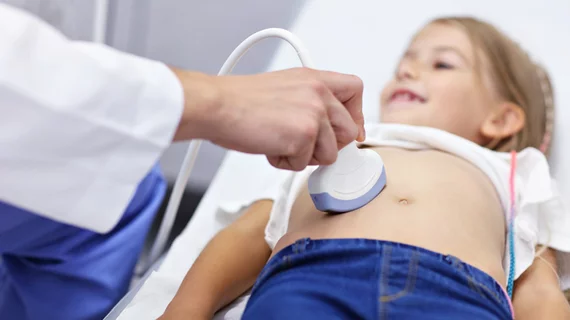Pediatric appendicitis patients who aren’t diagnosed until well into the flareup are sometimes imaged at dangerously low rates, according to a new investigation published in JAMA Network Open.
A burst appendix is the most common surgical emergency among children and appendectomy the most common intervention, but delayed diagnoses are all too common, prior research has shown. Wanting to better understand the factors leading to these postponements, experts analyzed outcomes across five pediatric emergency departments, sharing their results Tuesday.
Bottom line: Compared to pediatric patients whose appendicitis is caught early, those with delayed appendicitis diagnosis tend to have milder initial symptoms but worse outcomes.
“These findings suggest that a majority of delayed diagnoses were at least possibly preventable and that many of these patients did not undergo indicated imaging, suggesting an opportunity to prevent delayed diagnosis of appendicitis in some children,” Kenneth Michelson, MD, with the Division of Emergency Medicine at Boston Children’s Hospital, and colleagues wrote Aug. 31.
Their case-control study included nearly 750 pediatric patients treated in the ED between 2010-2019. Those who met the criteria were under 21 years old and experienced a delayed appendicitis diagnosis—defined as having visited the ED twice, with this concern likely missed during the first encounter.
About 63% experienced such a delay, while 37% did not, and the latter served as the control group. Children with a slower diagnosis were more likely to have a chronic condition, longer duration of abdominal pain, no such discomfort while walking, aching in the abdomen outside the right-lower quadrant and no abdominal guarding. They also experienced longer hospital stays, higher perforation rates and greater chances of undergoing two or more surgical procedures when compared to those with timely diagnoses. About 23% of these misses were “likely preventable,” while 52% were “possibly preventable,” the authors note.
Imaging can drop the chances of misdiagnosis, Michelson et al. noted. But the overuse of CT increases radiation risks, and ultrasound can introduce the risk of false positives or inconclusive findings. Evidence has suggested that imaging is cost-effective for this clinical concern as long as the probability of appendicitis is at least 16%. Investigators estimated that, among patients for whom imaging would be cost-effective, between 22% and 61% received it, depending on the risk-calculation method used.
“To improve the diagnosis of appendicitis, EDs must engage in continual improvement in which key metrics are benchmarked, data are provided to clinicians, and missed diagnoses are reviewed,” Anupam Kharbanda, MD, with the Department of Pediatric Emergency Medicine, Children’s Minnesota, advised in a corresponding editorial. “Standardization of care through the use of appendicitis scoring systems and automated decision support is integral to reducing variability in care for pediatric patients with suspected appendicitis.”

